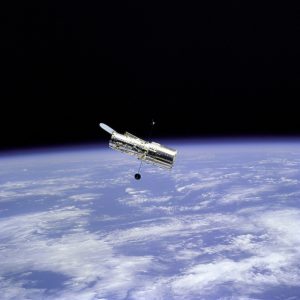Overview: The goal of the Hubble Telescope is gather light from cosmic objects so scientists can better understand the universe around us. Every 97 minutes, Hubble completes a spin around Earth, moving at the speed of about five miles per second. As it travels, Hubble’s mirror captures light and directs it into its several science instruments. Antennae on the telescope exchanges information between the telescope and the Flight Operations Team at the Goddard Space Flight Center in Greenbelt, Md. Engineers use satellites to direct and command the telescope.
Challenges: One challenge was getting funding as it was more costly than any Earth-based telescope. A nationwide lobbying effort was coordinated among astronomers and Senate approved half the budget. The European Space Agency (ESA) agreed to provide funding and supply one of the first generation instruments for the telescope in exchange for European astronomers being guaranteed at least 15% of the observing time on the telescope. Congress eventually approved funding of $36 million in 1978. Yet another challenge was the Challenger disaster which postponed the launch of Hubble. After Hubble went into orbit, it was discovered to have a flaw in which the primary mirror wasn’t quite the right shape, causing the light that bounced off the center of the mirror to focus in a different place than the light bouncing off the edge.
Assessment: I believe the challenges were handled well. When they fixed the mirror, they continued to further improve upon the telescope. All in all, it has had a mainly neutral impact on its surrounding environment. It does no harm, simply transfers data and brings news about the environment to the Space Flight Center.
Summary: The Hubble Telescope has beamed several images back to Earth, shedding light on unknown aspects of astronomy. It has clarified theories of space and opened up new discoveries. Hubble has revealed the age of the universe to be about 13 to 14 billion years,played a key role in the discovery of dark energy, and helped scientists understand how galaxies are formed by showing galaxies in varying states of evolution.
Links: https://archive.stsci.edu/hst/
http://hla.stsci.edu/hlaview.html
http://hst.esac.esa.int/ehst/
